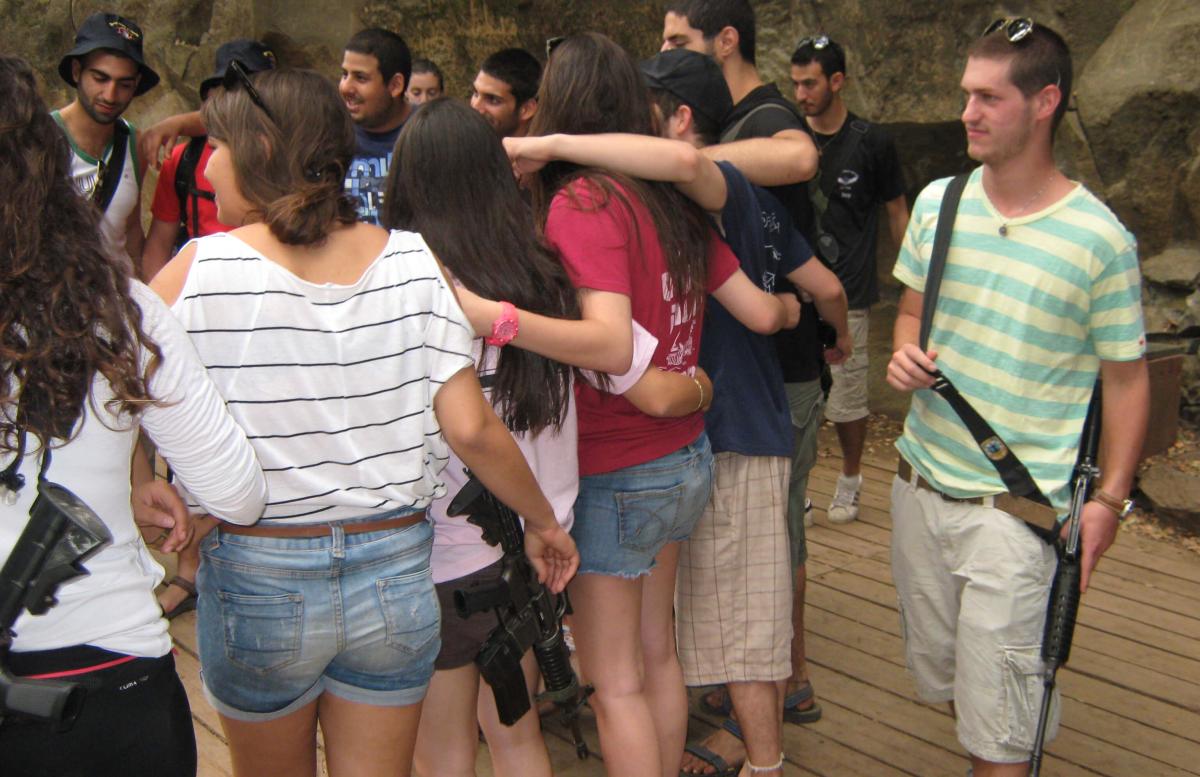Columban Fr Colin McLean continues his reflections on events during his course in Tantur, an ecumenical Institute initially set up by Pope Paul VI in Jerusalem.

A group of young armed Israelis. Photo: Fr Colin McLean
Another of our excursions during my course in the Holy Land was to Caesarea Philippi, the town built by one of Herod the Great`s sons, Herod Philip II. He built it in honour of the emperor Caesar Augustus, but it is said, he included his name so it would not be confused with the other Caesarea built on the shores of the Mediterranean Sea as the centre of Roman administration in Palestine. Caesarea Philippi would become known in the Gospels as the locale where Peter made his profession of faith in Jesus as the Messiah.
When we first got to Caesarea Philippi, the first sight we saw was a group of young Israelis seemingly having an enjoyable, relaxing day`s outing, but all were armed to the teeth! They were obviously doing their three years of compulsory military training, but one had to wonder the necessity of the heavy weapons on their day off!
In Mark`s account of Caesarea Philippi, he places the story of the cure of a blind man immediately before it. In the story of the cure, after Jesus had placed his hands on the blind man`s eyes, he (Jesus) asked the man if he could see anything. The man replied, “Yes, I can see people, but they look like trees walking about”. Then Jesus placed his hands on the man again. This time the man looked intently, his eyesight returned, and he saw everything clearly.
Although Peter professed Jesus as the Messiah, neither he nor the other Apostles had in mind the same image of “Messiah” that Jesus had. Then Jesus speaks of his passion and death but also mentions his resurrection. In Mark`s Gospel Jesus does this three times. Mark focuses on the suffering of Jesus as integral to his identity and mission. Peter`s rebuke of Jesus shows that the disciples` understanding only comes gradually like the sight of the blind man in the previous story. Full understanding would only come later in the light of the resurrection.
Caesarea Philippi. Photo: Fr Colin McLean
While Mark does not mention Jesus calling Peter “Cephas” (the Rock) at this locale, as Matthew does, it is easy to see why the image came to Jesus` mind. Almost the whole locale is rock. Now, Jesus is asking the same question of us, “Who do you say that I am !” Michael Fallon, an MSC priest writes, “If we can say, like Peter, that Jesus is the one we have been waiting for, who teaches us about love, life, freedom, prayer, about ourselves and about God then we are ready to join him on the road to Jerusalem, ready to understand more fully what it means to follow him as a disciple.”
Columban Fr Colin McLean resides in Essendon after living and working in Brazil for 35 years.
Related links
- Read more from the current Columban eBulletin

